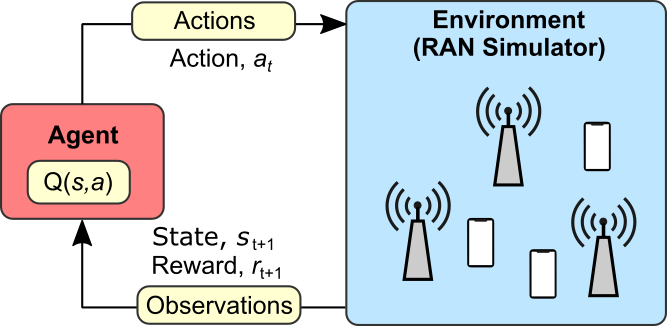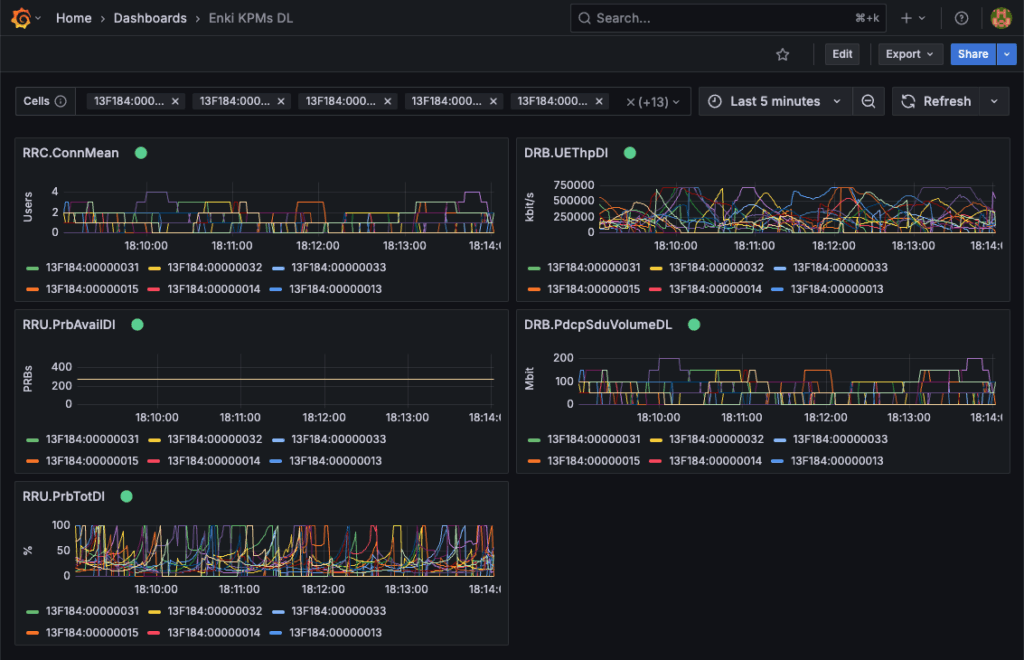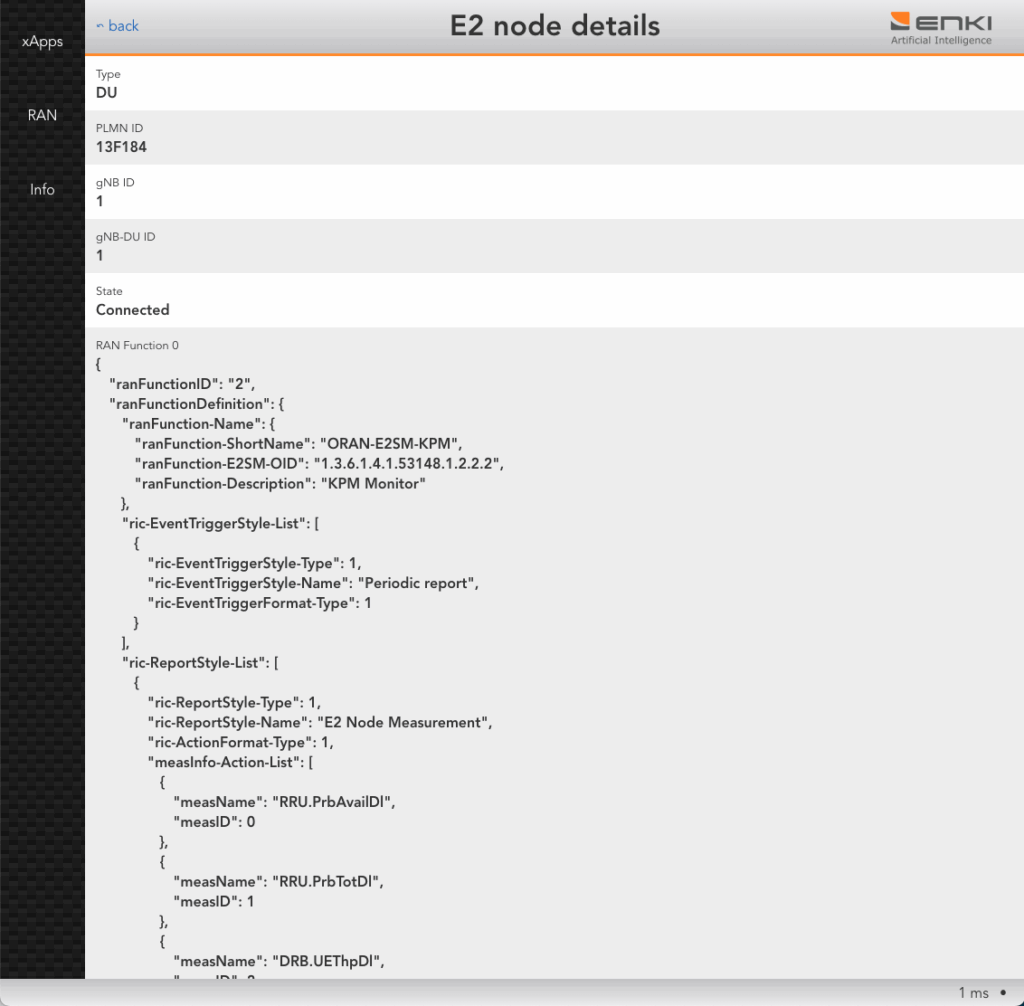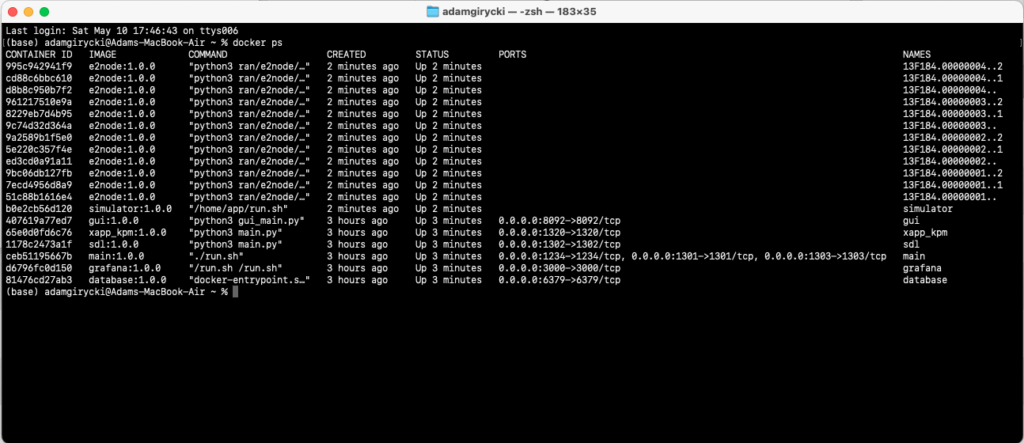RAN Simulator
The 5G NG-RAN Simulator is a vital tool for developing AI/ML algorithms aimed at optimizing the Radio Access Network (RAN). It is designed to serve as the environment for reinforcement learning.

The reinforcement learning approach in machine learning relies on the concept of an environment. The RAN Simulator functions as this environment, receiving actions (e.g., RIC Control Requests) and providing corresponding observations in the form of Key Performance Measurements (KPMs).
The Simulator emulates O-CUs and O-DUs, providing an E2 interface compliant with O-RAN Alliance specifications, enabling seamless integration with the Near-Real Time RAN Intelligent Controller (Near-RT RIC).

5G NG-RAN Simulator architecture with its internal functions.
The tool simulates the behavior of the RAN and User Equipments (UEs) within the system, including their mobility patterns and downlink traffic. It integrates an O-CU handover algorithm and an O-DU scheduling algorithm. The results of these algorithms are visualized through the Positioning Dashboard, offering detailed insights into system performance.

Grafana Position dashboard serving as the Graphical User Interface (GUI) for the 5G NG-RAN Simulator. The dashboard displays AP locations, UE positions, serving cells, PRB resource usage, and signal power levels.
The Simulator estimates Key Performance Measurements (KPMs) standardized by 3GPP and O-RAN, and reports them via the E2 interface. It can also receive RIC Control Requests from the Near-RT RIC and respond with the corresponding KPM data.

The Grafana-based graphical interface presents cell-level KPM metrics as reported by the E2 nodes.
The emulated O-CUs and O-DUs replicate the behavior of real E2 nodes, making them indistinguishable to the Near-RT RIC.

The RAN view of the Near-RT RIC lists the E2 nodes connected to it, including the cells served by each E2 node.
The RAN Simulator supports both E2AP and E2SM signaling, making it an ideal tool for Near-RT RIC O-RAN compliance verification and capacity testing.

The E2 nodes—specifically the CUs and DUs—are connected to the Near-RT RIC via the E2 interface, compliant with O-RAN Alliance specifications.
The Simulator is a containerized software solution developed in Python, designed for flexibility, ease of extension, and rapid development.

Process status (PS) of the Near-RT RIC and the Simulator, including the simulated E2 nodes.
Observe the RAN Simulator in action to gain valuable insights into its real-time performance, behavior, and interactions with the connected components.